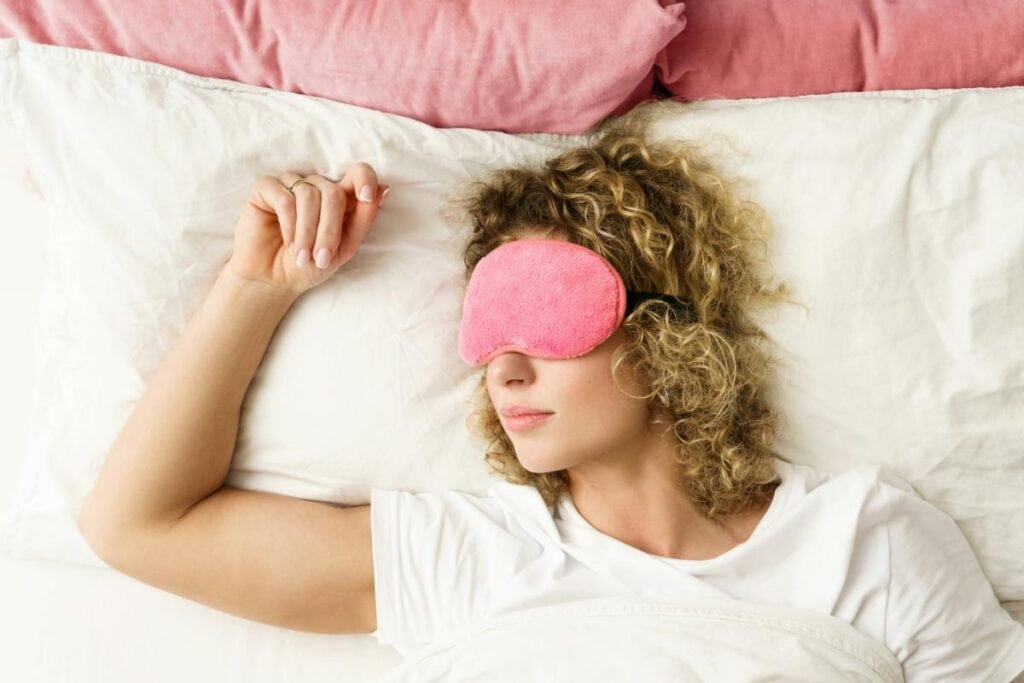
If you’ve ever finished folding the last load of laundry at 11 p.m. only to find a forgotten sippy cup under the crib, you’re not alone. According to the Sleep Foundation, more than half of women ages 25-44 with children get less than 7 hours of sleep per night, compared to 38% of men in this group.
This guide is your plan to transform any bedroom into a soothing haven, no contractors or big-ticket remodels required.
Why Bedroom Sleep Optimization Matters for Moms
Better sleep isn’t a luxury; it’s a necessity that ripples through every corner of family life. According to the Mayo Clinic, during sleep, the immune system releases proteins called cytokines, which can help deal with stress and fight infections.
Without enough sleep, these protective proteins and other important infection-fighting cells are reduced, making you more susceptible to illness.
Furthermore, lack of sleep interferes with hormones that regulate appetite. In Mayo Clinic research, when healthy study participants slept only four hours a night, they consumed 350 more calories than usual the following day.
While these tips can improve sleep, persistent exhaustion or loud snoring warrants professional evaluation. Those diagnosed with sleep apnea may be prescribed specific equipment, including modern options available in RespShop’s carefully curated ResMed CPAP supplies collection.
From Go Mode to Slow Mode: Harness Environment & Ritual
Your nervous system needs cues to decelerate after a long day of kid-wrangling and evening chores. Try a 15-minute “bridge” routine that starts outside the bedroom to signal that rest is approaching.
Add a plush throw for tactile comfort, as a soft, supportive spot like Koala’s cozy sofa bed can create an inviting wind-down area before you migrate to bed.
This simple routine can make a world of difference:
- Dim the lights and start a soft playlist.
- Add a calming scent like lavender or chamomile with a diffuser.
- Do a few gentle stretches or take five deep belly breaths.
- Jot down tomorrow’s to-do list on paper to park worries outside your head.
- Slide phones into a charging station located outside the bedroom.
Lighting for Better Sleep – Creating a Calm, Restful Glow
One of the fastest ways to signal “sleep” to your brain is by controlling light. Start by swapping harsh overhead bulbs for warm ambers. Standard ceiling fixtures often burn at a bluish-white 3000–4000 Kelvin, which can suppress the sleep hormone melatonin.
Replace those bulbs with 2200–2700 K “warm” LEDs or install inexpensive dimmer switches. Then, layer soft task lights, like small, dimmable lamps on dressers for late-night needs or a clip-on reading light with a warm filter. Finally, block disruptive blue light by using your device’s night-shift mode two hours before bed.
Pro Tip: The fastest way to signal ‘sleep’ is with light. Swap harsh overhead bulbs for warm LEDs (2200–2700 K) to boost melatonin and create an instantly calming glow. It’s a small change with a huge impact.
What to Remove From Your Bedroom for Better Sleep

Creating a sanctuary is as much about removing things as it is about adding them. Focus on eliminating these four sleep saboteurs from your bedroom environment.
- Screens & Devices: The blue light delays melatonin production. Park phones, tablets, and laptops in a hallway charging tray for the night.
- Clutter & “Visual Noise”: Research shows clutter competes for your brain’s attention, spiking stress hormones. A simple three-basket sort (trash, relocate, keep) works wonders.
- Light Leakage: Even small amounts of light can disrupt sleep cycles. Invest in blackout curtains and use an under-door draft guard to block hallway LEDs.
- Emotional Residue: Bills, permission slips, or piles of unfolded laundry silently shout “unfinished business.” Move these items to a desk or hamper outside the bedroom.
Key Insight: Clutter is not just messy. It is mental noise. Research shows it competes for your brain’s attention and spikes stress hormones. Removing visual distractions is one of the most powerful steps toward true mental rest.
Your Morning Starts the Night Before
A peaceful night leads to a smoother morning. Set yourself up for an easier launch by taking a few minutes before bed to prep for the next day. Lay out kids’ outfits and pre-portion fruit for lunchboxes.
Program the coffee maker and pair your blackout curtains with a gentle dawn-simulation alarm clock. This allows you to wake to gradual light instead of a jarring ringtone. A clear dresser surface at night means fewer frantic hunts for keys or pacifiers in the morning.
Pro Tip: Frame your evening prep as a gift to your future self. Five minutes of planning at night buys you a peaceful, intentional morning, trading frantic chaos for a calm start to your day.
The Path Forward
Your bedroom does not need a costly makeover to become a calm cocoon. Small, steady tweaks that take just 15 minutes each night can lead to deeper sleep, brighter mornings, and a happier household. A well-rested mom makes everything else possible. Sweet dreams tonight, you have earned them.
